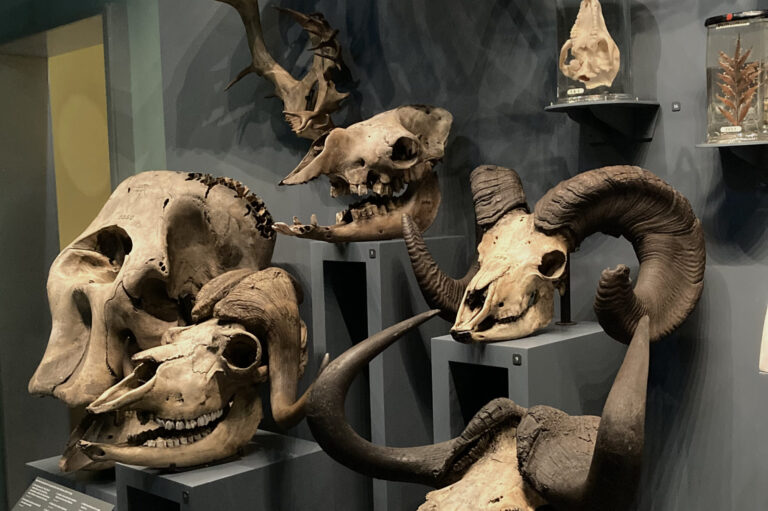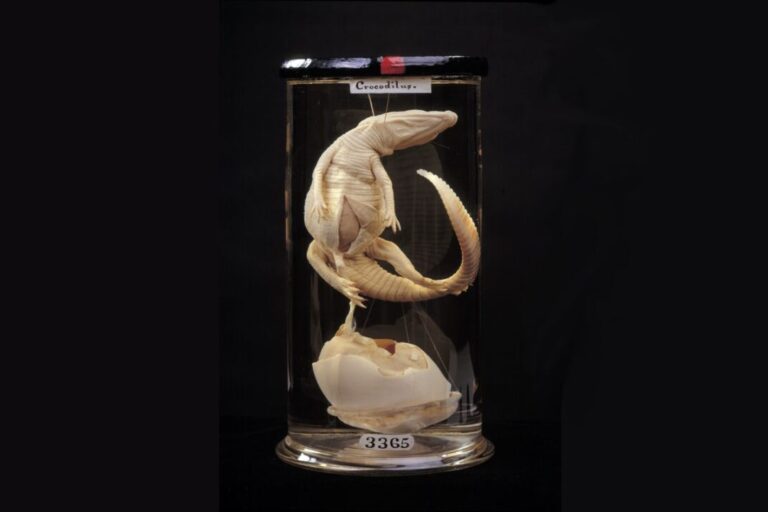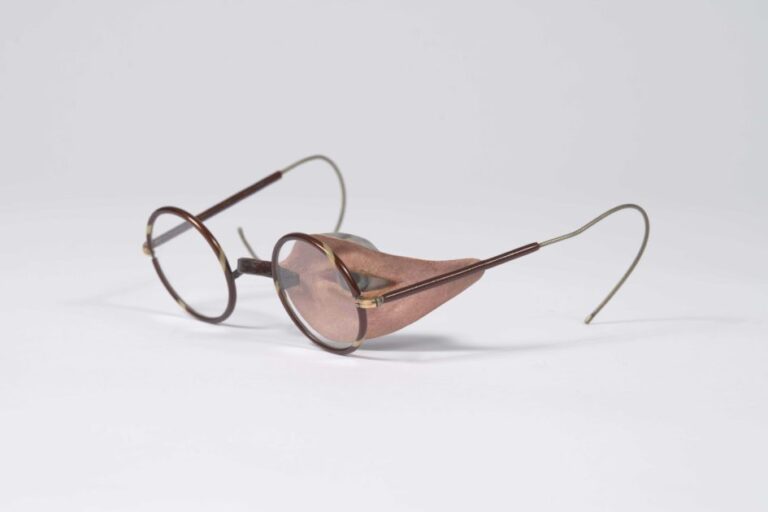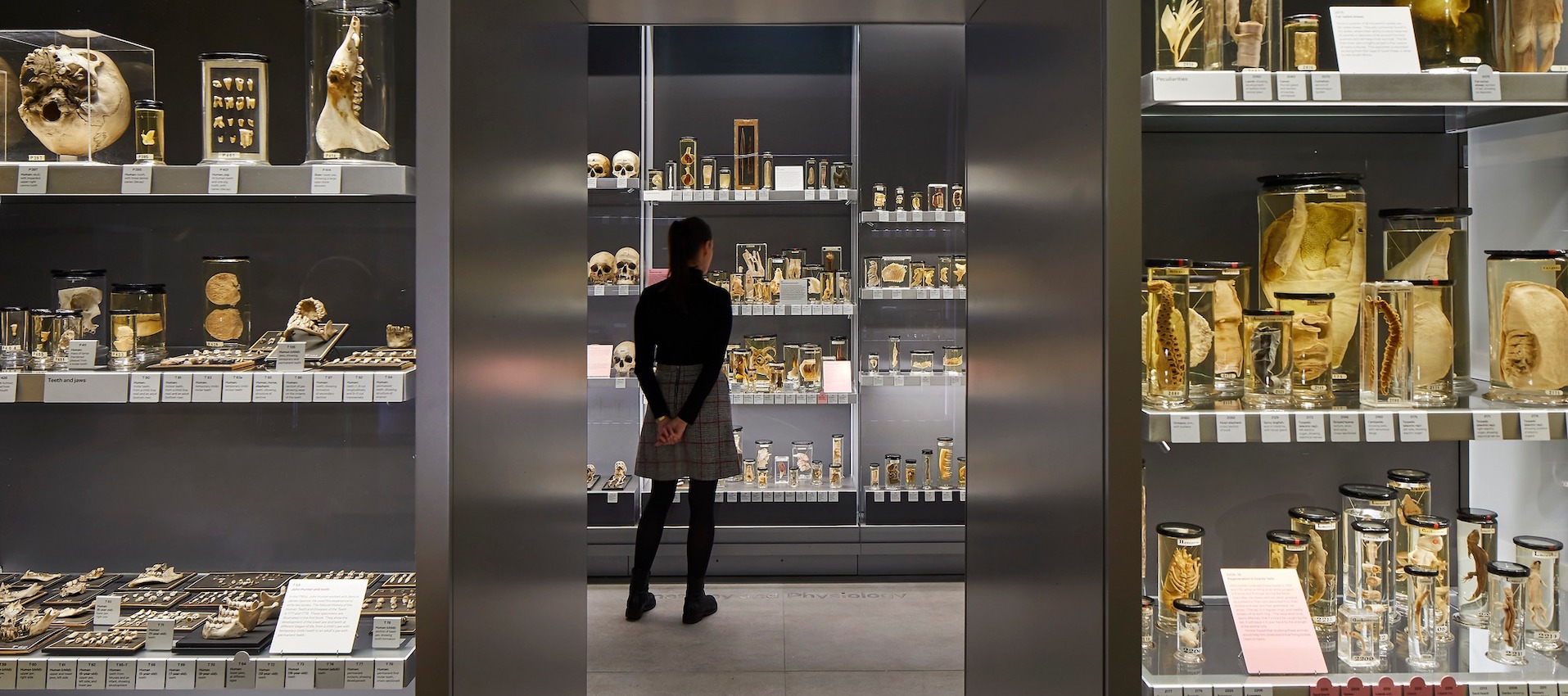The Hunterian Museum | London’s Undisputed Grisly Gem
Well, here’s a museum you don’t want to get stuck in overnight.
The Hunterian houses a jaw-dropping collection of over 2,000 medical specimens amassed by the 18th century surgeon and anatomist John Hunter. From embryonic crocodiles to excised tumours, life in all its forms has been meticulously preserved, labelled and displayed in a vast library of luminous spirit jars, alongside various other medical artefacts and curios.
The museum has just recently reopened its doors after being closed for six years of renovations. Fittingly, you’ll find it within the Royal College of Surgeons of England; a grand, classical building overlooking Lincoln’s Inn Fields in Holborn. The building was badly damaged during WWII, which destroyed the vast majority of Hunter’s collection, but today there are still thousands of intriguing objects on display – and it’s totally free to visit.

The dark, labyrinthine museum begins with a brief introduction to the field of human anatomy at the beginning of Hunter’s career. It was still a relatively new discipline; for literally centuries healers had been taking the word of a Greek physician living in ancient Rome (who, while hugely influential, had performed all his dissections on apes and pigs). In the mid 16th century laws were loosened and medical students were able to study dead bodies in order to understand how a healthy, living body should work. And people got really into it. The focus of the first room here is a set of tables from Padua, Italy, where the entire nervous, venal and arterial systems of the human body were carefully laid out, glued and varnished to wooden boards. Exactly the kind of thing you’d like to eat your dinner off.

The bulk of the Hunterian’s collection is formed by thousands of preserved human and animal specimens. A rigorous scientist, Hunter collected birds at different times in mating season to compare their testicle size; charted the stages of foetal development across dozens of species (including humans); and reassembled skeletons of animals born with two heads, all in an effort to document and understand the body, and how to fix it when things go wrong.
Hundreds of other items have been added to the collection since, so even if you quickly skip past the cabinets of creepy jars, you can see other oddities like Churchill’s dentures and a young Lord Byron’s orthopaedic shoe; an 18th century condom made from sheep’s intestine; a mammoth tooth; surgeon’s tools; and a preserved chameleon, with its tongue extended all 7 or so inches. You can also get a feel for Hunter’s unusual home life: a keen host, his house in Leicester Square had both resplendent rooms for dinner parties, as well as a back door where corpses were carted in and out for his anatomy lectures.

The Hunterian Museum’s most fascinating room contains case studies of some of the patients Hunter treated. Medical notes and sketches are accompanied by the problematic body parts themselves; some successfully removed by Hunter, others which were to prove fatal, and were later preserved for study. It’s a fairly shocking reminder of how much disease and mortality were part of daily life back in those days, when tripping over at the docks could cause a worker’s salivary glands to expand to the size of their head, or a syphilis infection meant sufferers had to wear glasses with a false nose attached to cover the fact that their own had fallen off.
It’s fascinating and gruesome in equal measure, and well worth a visit…
…if you can stomach it.
NOTE: The Hunterian Museum is open Tuesday – Saturday, 10am-5pm. Entry is free – you can find out more HERE.
The Hunterian Museum | The Royal College of Surgeons of England, 38-43 Lincoln’s Inn Fields, London WC2A 3PE
Penchant for the unusual? Take a look at London’s quirkiest museums
